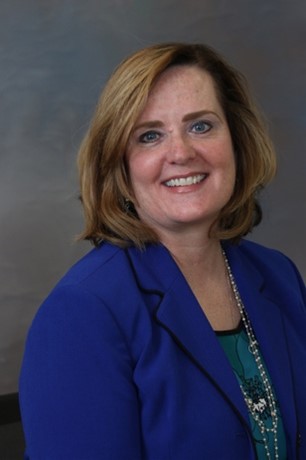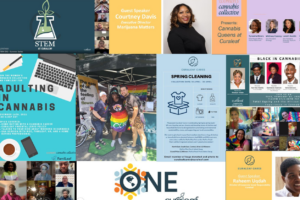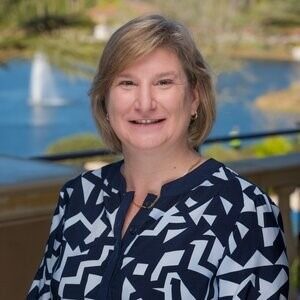5 components of Subaru’s effort to create a retirement-positive culture
Talking about the overlooked wellness area of retirement openly, with positive tones, gives organizations time to fight ageism, plan career paths, and create continuity.

While most large companies offer a 401(K) option or other financial strategies to support employees with retirement, too few focus on the wellness aspect of retirement planning.
Fidelity Investments estimates a 65-year-old couple retiring last year can expect to spend $295,000 on medical expenses in their remaining years. This figure didn’t include long-term care or treating chronic diseases like diabetes.
Being financially prepared is only one way to plan for what could be 15 to 20 more years of life. The healthier their lifestyle and mental wellbeing, the more likely a retiree will put that 401(K) to good use.
Logically, getting older employees engaged in an organization’s wellness program could help them better prepare physically and emotionally for retirement and save them money as a result.
Rob Croner, vice president of senior executive services at the Philadelphia-based talent-management and human-resource consulting firm CCI Consulting, has spent 40 years in HR and now helps organizations develop better wellness planning for retirees. Retirement planning is a term usually tied to financial benefits discussions and choosing post-employment hobbies. But modern retirement planning is more holistic and requires input from the prospective retiree and his or her organization. “I’m a big believer that employees need a framework from a wellness perspective on how to think about retirement planning,” Croner says.
Building a framework
Such a framework can not only help employees consider whether they can afford retirement, but also determine if they’re healthy enough to engage in the activities they have planned and are emotionally prepared for the transition.

Wellness directors can create this framework and guide employees through the process as much as five years from retirement. Croner says it’s not unusual for retirees to find themselves bored three months in. Work structures the day, provides social opportunities and offers a purpose in life. Not appropriately preparing to replace these in retirement leads to “failed retirement.”
“Wellness programs should provide programming that speaks to that work-benefit side—how do you think about structuring your day, what’s going to give you purpose and meaning, how you’ll create community,” Croner says. “Providing planning and programming around that is important.”

A framework for retirement planning
Flexibility in continuing work opportunities for retirees is often a popular option. Whether it’s going part-time first, coming back as a volunteer, or helping out with mentoring or ambassadorship programs, retirees can still find some routine and purpose supporting an organization they love.
Culture and communication
Creating a positive culture around retirement is critical to help employees plan better and feel supported as they near retirement. The stigma against leaving the workplace often results in an employee’s surprise retirement, leaving the organization scrambling to replace them and fill in gaps in the leadership funnel.
A transparent organization talks about retirement openly, with positive tones, and does away with the taboo. Croner says this can open avenues of knowledge transfer between the experienced worker and the organization. A retirement-friendly culture allows organizations more time to plan career paths and create better continuity. It can also help with retention.
Communicating the framework and its components leads to better engagement as well. Croner says access to relevant information needs to be simple and communicated often. And while sitting down with an HR rep is common for helping employees filter through all their options, various methods of communication are better to reach an audience in their preferred method.
Some channels include:
- Small group meetings
- Large group meetings
- Q&A sessions
- Webinars
- Videos
“The most effective I’ve seen is a really good balance between targeted communications,” says Croner. “Some combination of static and dialogue-based communications is going to be really good. I’m a big believer in group sessions, because so much of the communication happens in the networking.”
It also needs to be done well in advance. Experts recommend that employees should start considering what they want their retirement years to look like five years out of an expected retirement date. At three years out, they need to dig deeper, set goals, and find their new purpose.
Positive and negative trends
Two topics discussed around wellness programs these days include flexibility and mental health, which shouldn’t stop with remote workers or working parents. Employees nearing retirement need flexibility and mental health support, too.
Having flexible options can help both worker and employer transition better. Adding this employee population into already-existing early-career and mid-career development programs is one idea Croner suggests.
And with depression a significant issue in older populations, keeping retirees supported with well-planned retirements and a healthy lifestyle is foundational to a retiree-friendly wellness plan. Though DE&I is another frequent topic in the workplace, ageism isn’t often mentioned, Croner says. Better support for older employees, like an ESG or mentoring program, is not only equitable but also supports an inclusive culture.
A study of Subaru’s work to destigmatize retirement
Subaru employs 1,300 workers at its Camden, New Jersey, headquarters. A full quarter of those employees are 55 and older. With such a high percentage of older employees and a commitment to “sharing the love,” the auto manufacturer’s wellness team has its future retirees in focus.
Investing in talent development and career pipelines, Subaru developed programs for early and mid-career employees. An average of 30 employees retire every year, so Subaru set out to create a consistent succession path to fill the void and a healthy transition framework.
To help establish a supportive retirement culture, Subaru created the “Love What’s Next” program. The program drives retirement-transitioning employees to think positively about retirement and feel supported in their decisions.
The program offers:
- Preparedness analysis by retirement consultant firm CCI Consulting.
- One-on-one conversations with provider Fidelity Investments to discuss financial issues and decision-making.
- Guided thinking and conversations between a retiree and loved ones to gauge expectations and assumptions about post-retirement life.
- Health benefits through Horizon BCBS that extend into retirement.
- An EAP through Cigna that assists with mental health support.
“We find this program has been very popular with individuals and with spouses,” says Peggy Verdi, vice president of human resources and administration at Subaru. “It’s an opportunity for our employees to really take a step and focus on them.”

Leadership referrals, intranet communications, and word-of-mouth steer employees to the program. So far, 100% of its retirement population has participated in “Love What’s Next.” Verdi says it gives employees more flexibility as their career comes to an end, with less stress and more commitment to the organization.
“We’re trying to encourage people when they’re even five years out from retirement to begin having conversations and getting education on Medicare and Social Security,” says Verdi. “We would love to see more people coming to us at fifty.”
More individuals are currently reaching out to HR at age 55, but Subaru also has several long-tenured employees who stay much longer than the typical retirement age.
“[Love What’s Next] was an investment for us, and it continues to be an investment, but well worth it,” says Verdi. “We look at it holistically from an emotional standpoint, from a financial standpoint. It’s really trying to treat individuals with that care, that dignity, and that respect exiting the organization as we did when they came in.”
COMMENT
Ragan.com Daily Headlines
Tags: culture, planning, retirement, Subaru, Wellness






